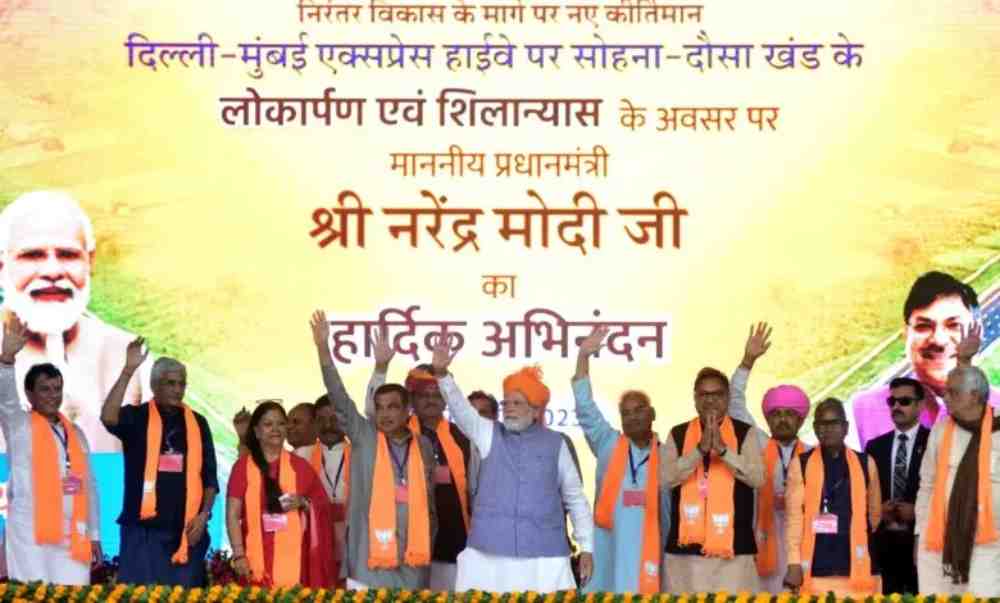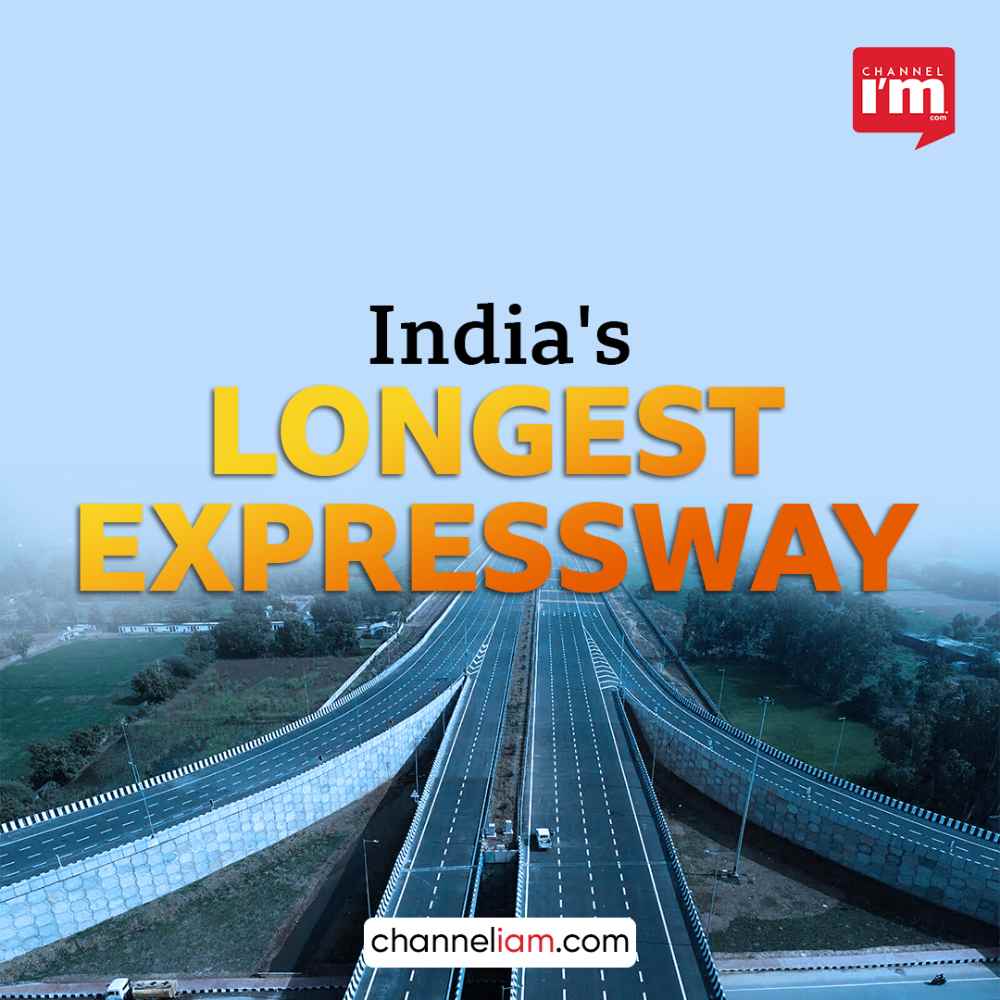- First phase of India’s longest Delhi-Mumbai Expressway opened
- The Prime Minister dedicated the Sohna – Dausa – Lalsot Express Highway in Rajasthan to the Nation
Grameen Huts’ to be set up on Express Highways to help local Farmers and Artisans - Dedicated lanes for Electric Vehicles, Charging Stations, Helipads and Trauma Centres
- 10 crore workdays to be created
- With the completion of the expressway, Mumbai-Delhi travel time will be reduced from 24 hours to 12 hours
New Delhi: Prime Minister Narendra Modi inaugurated the Sohna – Dausa – Lalsot stretch (246 km) in Rajasthan, part of the longest Delhi-Mumbai Expressway in India. With this, Delhi-Jaipur travel time will be reduced from five hours to three-and-a-half hours. With the completion of the 1,386-km, 8-lane Greenfield Expressway, which will be constructed with alignment optimization, the Mumbai-Delhi travel time will be reduced from 24 hours to 12 hours.

This is the first expressway to be developed with a median of 21 metres. The expressway also has a state-of-the-art automated traffic management system. It is the first expressway in Asia to incorporate wildlife-friendly animal overpasses, underpasses and boundary walls to address the problems of the Ranthambore Wildlife Sanctuary that crosses the road.

All sections of society will be empowered when investments are made in highways, railways, ports, airports, optical fibre, digital connectivity, construction of houses and colleges. Prime Minister Narendra Modi also said that ‘Grameen Huts’ will be set up along the express highway to help local farmers and artisans.
The expressway has dedicated lanes for electric vehicles, electric vehicle charging stations, helipads, trauma centres and aid stations every two km. 94 wayside centres with various facilities have been set up to enhance the travel experience.

12 lakh tonnes of steel is used for construction. That is, steel equivalent to 50 Howrah bridge is used for the Express Highway.
The Prime Minister said that the world’s most advanced expressway paints a great picture of developing India. Ahead of this year’s assembly elections, he laid the foundation stone for the 247-km national highway projects being developed at a cost of Rs 5,940 crore in Rajasthan.
The Prime Minister said that the development of the country is also moving through modern roads, railway stations, railway lines, metro and airports. Central government has been investing heavily in infrastructure development for 9 years. 10 lakh crore has been allocated in the new budget. Investments in infrastructure benefit the economy and create more jobs.
Union Minister for Road Transport and Highways Nitin Gadkari, Union Minister of State VK Singh and Union Minister Gajendra Singh were also present on the occasion. Rajasthan Chief Minister Ashok Gehlot and Haryana Chief Minister Manohar Lal Khattar joined via video link.
The construction cost of the first phase of the expressway, Sohna-Dausa-Lalsot, is Rs 12,150 crore. Construction is ongoing so that it can be expanded to 12 lines in the future.Union Minister Nitin Gadkari said that when the project is completed, 10 crore working days will be created, including 4,000 Civil Engineers.
Total length of Mumbai-Delhi Expressway: 1,386 km. Once the route becomes a reality, the current Mumbai-Delhi distance will be reduced from 1,424 km to 1,242 km and travel time will be reduced from 24 hours to 12 hours. It is estimated that around 30,000 crore litres of fuel can be obtained in this way every year.80000 kg of carbon pollution will be reduced. More than 2,000 recharge points of rainwater harvesting are being installed at 500 metre intervals.
It will connect Gurugram, Sohna, Nooh, Mewat in Haryana and Alwar and Dausa in Rajasthan.
The 93 PM Gati Shakti also connects economic nodes, 13 ports, eight major airports, eight multimodal logistics parks and greenfield airports such as Jewar Airport, Navi Mumbai Airport and JNPT Port. There are more than 40 major interchanges that provide connectivity to major cities such as Jaipur, Kota, Indore, Bhopal, Vadodara and Surat.
